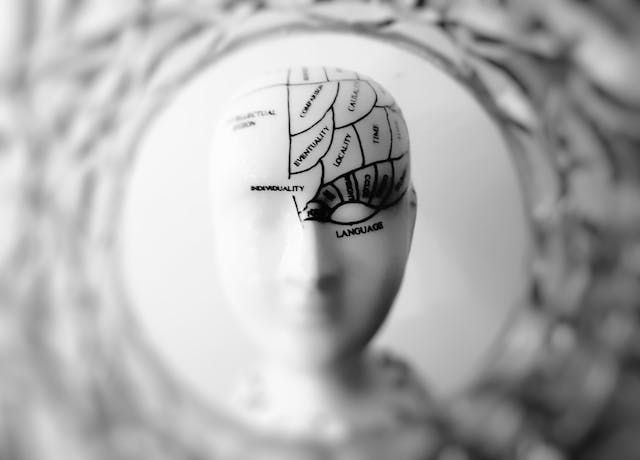
Some days, it feels like I’m two people.
There’s a quiet, wise voice—my higher self—whispering, “You’re okay. It’s hard, but you’re doing your best. Breathe. Keep going.”
But then there’s another voice. Louder. Raw. A younger version of me who screams, “This isn’t fair! I’m tired! I want someone to fix it or at least let me rest!”
This is the everyday tug-of-war that Internal Family Systems (IFS) calls polarization: when parts of us battle each other for control, safety, or love.
IFS 101: You’re Not Broken, You’re Multidimensional
IFS teaches that we’re not a single, static identity—but a beautifully layered system of inner parts, each trying to protect us.
Some of mine?
- The Achiever who gets things done, fueled by “what if you fail?”
- The Comfort Seeker who wants to nap, eat something sweet, and shut the world out.
- The Wounded Child who still aches from being overlooked or unheard.
- And the Calm Self—that soft, clear space that sees it all without judgment.
Learning to listen to these parts, rather than silence or shame them, is the heart of inner child healing.
Polarized Parts: When Love Feels Like a Battlefield
When two parts lock into opposition—like mine do often—it’s not sabotage. It’s strategy. It’s protection. It's legacy.
My inner child wants safety, comfort, care. She’s not lazy; she’s tired from holding decades of unmet needs.
My higher self isn’t dismissive; she’s the part of me that’s seen that I can survive hard things.
Through IFS, I’ve learned to stop picking sides—and start creating space where both voices can be heard.
Why the Conflict Hurts (and What It's Teaching Us)
These inner battles often stem from childhood wounds, moments we had to “be strong” before we were ready. In response, some parts became overly responsible, while others held onto grief, rage, or fatigue.
IFS and inner child healing help us:
- Understand how those roles came to be.
- Let each part tell its story.
- And gently invite our Self—compassionate, calm, curious—to mediate.
A Real Practice: Healing the "Push Through vs. Lay Down" Fight
Next time you feel that pull—keep going or give up—try this IFS-inspired check-in:
- Pause. Breathe. Name the voices. Mine often sound like:
- “Get up. You’ll feel better if you’re productive.”
- “Lie down. You never get a break.”
- Unblend. You are not either voice. You are the Self in the middle.
- Talk to them. Yes, really. Try: “Thank you for trying to help me. What are you scared will happen if I don’t listen to you?”
- Listen. Love. Lead. Your job isn’t to shut them down—it’s to help them feel heard and held.
Research Meets Real Life
IFS isn’t just feel-good fluff—it’s backed by evidence:
- It reduces anxiety and trauma symptoms by unburdening overwhelmed parts.
- It builds inner trust, increasing emotional resilience.
- And it strengthens the connection to Self-energy, which improves mental clarity and self-compassion.
A Warm Invitation to Start
If you’re curious to begin your own journey of inner child healing through IFS, here’s what helped me:
- Journal like you're in a group chat: Let each part take the mic. You might be surprised who shows up.
- Talk out loud when you’re alone: Give the tired voice space to complain. Let the wise one soothe. Let your Self listen.
- Rest is a right, not a reward: That inner child deserves a nap before she earns it.
Final Whisper: All Parts Are Welcome Here
Your exhaustion isn’t weakness. Your inner child’s tantrum isn’t immaturity. Your calm voice isn’t naïve optimism.
They're all you. They're all worthy of love.
IFS taught me this: The battle within isn’t something to win—it’s something to understand. And when you do, something shifts.
The voices get softer. The tension loosens. And in that space, healing begins. Contact us today to work with an IFS trained therapist.
Sending Love & Light,

For many individuals, the concept of mindfulness is synonymous with practices like meditation and visualization. However, what happens when visualization doesn't work for you? How can you still cultivate mindfulness and reap its benefits? In this blog post, we will explore alternatives to traditional mindfulness practices for those who struggle with visualization or meditation. From tailoring the techniques to the individual to incorporating EMDR therapy, there are plenty of options to explore. Let's dive in and discover new ways to embrace mindfulness.
Understanding the Challenges of Traditional Mindfulness Practices

Traditional mindfulness practices like meditation and visualization are celebrated for their benefits in enhancing mental well-being and promoting a state of calm. However, these methods aren't universally effective, posing unique challenges for some individuals. For those who find it difficult to generate mental images, the common visualization techniques can feel frustrating and exclusionary. Similarly, meditation, with its emphasis on stillness and quieting the mind, can be daunting for people who experience restlessness or have an overactive mind.
This discrepancy highlights a crucial point: mindfulness is not a monolithic practice. It is a varied landscape of techniques, each with its own set of obstacles for different people. Recognizing and acknowledging these challenges is the first step toward opening the door to a broader understanding of mindfulness. It underscores the necessity of exploring a range of practices that can accommodate diverse experiences and preferences. As we navigate through these challenges, it becomes evident that flexibility and adaptability in our approach to mindfulness can lead to a more inclusive and beneficial experience for all.
The Importance of Tailoring Mindfulness to the Individual

Mindfulness is not a one-size-fits-all journey. Each person's experiences, challenges, and preferences shape how they can best engage with mindfulness practices. Recognizing this diversity is essential in making mindfulness accessible and effective for everyone. If traditional methods like visualization don't align with your abilities or preferences, it's crucial to remember that this doesn't exclude you from practicing mindfulness. Instead, it invites an opportunity to get creative and explore other techniques that might resonate more deeply with you.
Exploring different mindfulness practices is an act of self-compassion and personal understanding. Whether it's through mindful movement practices such as yoga or tai chi, focusing on the sensations of your breath, or engaging in daily activities with full awareness, there are myriad ways to cultivate mindfulness. The goal is to find practices that not only accommodate your needs. You must also enrich your daily life with moments of presence and awareness.
Engaging with practices that are in harmony with your individual needs can transform your mindfulness journey. This can be from one of frustration to one of discovery and growth. By remaining open to experimentation, you give yourself the space to uncover practices that support your well-being. This can lead to a deeper sense of mindfulness. This personalized approach ensures that your mindfulness practice is not only sustainable but also a source of joy and discovery in your life.
Practical Mindfulness Techniques Without Visualization
Exploring mindfulness beyond visualization opens up a wealth of possibilities for engaging with the present moment in a meaningful way. For those who find it challenging to conjure mental images, focusing on tangible, sensory experiences can serve as an effective alternative. One simple yet powerful technique is mindful listening. This practice involves paying full attention to the sounds around you. This can be the rhythmic patter of rain, the distant hum of traffic, or the subtle shifts in a room. By tuning into the auditory landscape, you can anchor yourself in the now without the need for visualization.
Another approach is to engage in tactile activities that ground you in the physicality of the present. Activities such as kneading dough, playing with clay, or even the act of cleaning can become mindfulness exercises. Just approach it with full awareness of the sensations in your hands and the movements of your body. These activities offer a direct pathway to mindfulness by leveraging the sense of touch, drawing your focus away from the whirlwind of thoughts and into the realm of tactile experience.
Mindful eating presents yet another avenue for cultivating mindfulness without visualization. By slowing down and truly savoring each bite, paying attention to the textures, flavors, and aromas of your food, you transform a routine activity into a deliberate practice of presence. Each of these techniques provides a unique way to experience mindfulness. It emphasizes the richness of the present moment through the senses rather than through visual imagery.
The Role of EMDR in Achieving Mindfulness
EMDR (Eye Movement Desensitization and Reprocessing) offers a unique contribution to the mindfulness journey, especially for individuals grappling with trauma. Although it primarily serves as a therapeutic tool for processing traumatic memories, its benefits extend to enhancing mindfulness. EMDR facilitates a deep engagement with the present moment. This is done by addressing and healing the emotional distress that can tether the mind to past events. This therapeutic process encourages an increased awareness and acceptance of one’s emotional state and thought patterns. It lays the groundwork for a more mindful way of living.
Through bilateral stimulation, typically involving eye movements, EMDR helps to unlock emotional processing that may be stuck, allowing individuals to experience relief from emotional blockages. As these blockages are addressed, individuals often find it easier to access states of mindfulness. This is due to their capacity for emotional regulation and presence in the now that is significantly improved. Engaging in EMDR therapy under the guidance of a skilled practitioner not only aids in the healing of past wounds but also enriches the pursuit of mindfulness by fostering a deeper connection with the self and the surrounding world.
Incorporating Mindfulness into Daily Activities

Integrating mindfulness into the fabric of everyday life can transform mundane tasks into opportunities for presence and awareness. Instead of seeing activities like brushing your teeth, taking a shower, or commuting to work as mere chores or routines, view them through a mindfulness lens. Focus on the feel of the toothbrush against your gums, the water cascading over your skin, or the rhythm of your footsteps. Each action offers a chance to ground yourself in the current moment.
Notice the colors, sounds, and sensations around you without judgment. Pay attention to your breathing as you move through these tasks. Allow each breath to bring you closer to a state of calm and focus. This practice doesn't require extra time out of your day but simply a shift in perspective and intention. By embedding mindfulness into these daily activities, you create a continuous thread of awareness throughout your day. This can make mindfulness an accessible and seamless part of your life.
Mindfulness Apps and Tools That Don't Rely on Visualization
In our technologically advanced world, a vast array of mindfulness resources is available at our fingertips. They are designed to cater to those who may not find visualization-based practices accessible or effective. Various applications and digital platforms provide a wealth of guided exercises, focusing on techniques such as mindful breathing, auditory practices, and body scans that do not require the user to visualize but instead to tune into other senses or aspects of their experience.
For example, Insight Timer features a wide range of mindfulness and meditation sessions focusing on sound. It has thousands of guided audio meditations from practitioners around the globe. Similarly, Headspace offers sessions centered on mindful techniques like noting and body scanning. This encourages users to pay attention to their thoughts, feelings, and physical sensations without the need to visualize. The Calm app also provides a plethora of mindfulness exercises, including daily calm sessions and sleep stories, that focus on the auditory experience and the practice of being present through listening and sensing.
These tools not only support those who prefer or require alternatives to visualization-based mindfulness but also enhance accessibility. It allows users to explore mindfulness in a way that aligns with their personal preferences and needs. By integrating these apps and tools into your mindfulness practice, you can discover new pathways to presence and awareness without relying on visual imagery.
The Benefits of Non-Traditional Mindfulness Practices
Embracing non-traditional mindfulness practices offers a multitude of advantages for those seeking alternatives to visualization and conventional meditation. These practices encourage an exploration of mindfulness through diverse sensory experiences and activities. This allows for a broader understanding and appreciation of the present moment. By engaging in mindfulness techniques that utilize sound, touch, or mindful movement, individuals can discover a deeper connection to their environment and inner self.
This inclusive approach ensures that mindfulness is accessible to everyone, regardless of their ability to visualize or sit in meditation. It promotes a sense of grounding and awareness that is both practical and profound, integrating seamlessly into everyday life. As you embark on this varied mindfulness journey, you will likely notice an enhancement in your capacity for emotional regulation, stress reduction, and overall well-being. The flexibility and adaptability of non-traditional mindfulness practices make them a valuable resource for cultivating a peaceful mind and a more mindful life, tailored uniquely to each individual's path.

Managing anxiety as a working parent can be an overwhelming task. Balancing the demands of work, family, and personal life can easily lead to feelings of stress and anxiety. In this blog post, we will explore some life hacks to help you manage anxiety and navigate the busy world of working parents.
Understanding the Roots of Your Anxiety
To effectively manage anxiety as a working parent, it's critical to pinpoint what specifically sparks these feelings. Anxiety can stem from a myriad of sources. This can be from, deadlines at work, the pressure of familial obligations, or even the internal quest for personal achievement. Delving into these triggers allows for a targeted approach in mitigating stress.
Reflect on moments when anxiety feels most potent and consider journaling these instances to uncover patterns or common themes. This process is not about placing blame but rather gaining insight into your emotional responses. By acknowledging these triggers, you equip yourself with the knowledge to develop tailored strategies. This can address your unique challenges, setting the stage for a more balanced and serene daily life.
Starting the Day on a Positive Note

Kicking off the morning with a positive mindset is a game changer for managing anxiety as a working parent. Consider implementing a morning ritual that nurtures your mental and emotional well-being. This could range from writing down three things you're grateful for, to visualizing your day unfolding in a positive way, or simply enjoying a quiet moment with your favorite cup of tea before the day begins. These practices not only help in setting a tone of gratitude and intentionality for the day but also equip you with a serene mindset to face the day's hurdles.
Engaging in physical activities can also invigorate your body and clear your mind, providing a double benefit. This can include a brief morning walk or yoga session. Incorporating such practices into your morning routine can significantly diminish anxiety levels. It can also boost your confidence to tackle the day ahead. Emphasizing this proactive start can be a cornerstone for a more balanced and joyful experience as a working parent.
Strategies for Effective Time Management
Mastering time management is key for alleviating anxiety for the working parent. An organized approach to your day can make a significant difference in how you perceive and handle stress. Begin by breaking down your tasks into manageable chunks, categorizing them by urgency and importance. This strategy enables you to focus on what truly needs your attention. It reduces the overwhelming feeling that everything is a priority. Utilize digital tools or planners to map out your week, allocating specific time slots for work commitments, family activities, and crucially, self-care and relaxation.
This holistic view of your schedule not only helps in balancing your responsibilities. It also in identifies opportunities to delegate tasks, whether at work or home. Remember, it's about working smarter, not harder. Effective time management also involves setting realistic deadlines and learning to say 'no' when necessary to avoid overcommitment. Each step taken to organize your time better is a step towards a less anxious and more fulfilling life as a working parent.
The Power of Mindfulness Throughout the Day

Incorporating mindfulness into your daily life as a working parent can act as a powerful tool to diminish anxiety and elevate your sense of well-being. This practice enables you to engage more fully with the present moment. It reduces the impact of stress and fostering a calm, focused state of mind. Throughout the day, find moments to pause and breathe deeply, centering yourself amidst the day's demands. These brief interludes of mindfulness can be as simple as taking a minute to notice the sensations of your breath or feeling the texture of an object in your hands, providing a quick reset for your mental state.
Consider setting reminders on your phone or computer to prompt these mindfulness breaks. This is especially useful during times you know are particularly stressful. During these pauses, focus solely on the present experience, letting go of concerns about past or future events. This practice can help break the cycle of continuous worry and anxiety that often accompanies the role of a working parent.
Additionally, incorporating mindfulness exercises can further enhance your ability to remain centered throughout the day. An examples of this can be focused breathing or mindful listening. By dedicating time to cultivate mindfulness, you pave the way for a more peaceful and present engagement with both your work and family life. This in turn, helps to manage anxiety with grace and resilience.
Building a Support System at Work and Home
Cultivating a reliable support network is pivotal for navigating the pressures of being a working parent with less anxiety. Engage with colleagues who understand your commitment to both your career and family. These connections can offer practical advice or a listening ear when you need it most. Don't hesitate to lean on friends or family members who can offer support. This can be lending an ear after a tough day or assisting with childcare duties.
An open dialogue with your partner about shared responsibilities and emotional support is also crucial. This collaborative approach not only eases personal stress but strengthens relationships by fostering mutual understanding and support. Additionally, exploring community resources or online support groups for working parents can extend your network. It can provide further opportunities for connection and advice. By proactively building and nurturing these support systems, you create a foundation of assistance and camaraderie that makes managing anxiety more achievable.
The Role of Physical Health in Managing Anxiety

Acknowledging the significant impact of physical health on anxiety management is vital for working parents. Engaging in regular physical activity is not just about keeping fit; it's a proven stress-reliever that can elevate your mood and enhance mental clarity. Finding an exercise regimen that fits into your busy schedule, whether it's a quick morning workout, a brisk walk during lunch breaks, or a yoga session to unwind in the evening, can be immensely beneficial.
Healthy dietary habits complement this approach, fueling your body with the nutrients it needs to combat stress effectively. Opt for whole foods rich in antioxidants, lean proteins, and healthy fats to keep your energy levels stable throughout the day. Equally important is ensuring you get adequate rest. Sleep deprivation can exacerbate anxiety, making it harder to cope with daily pressures. Strive to create a restful sleep environment and establish a calming bedtime routine to improve your sleep quality. Making these lifestyle choices a priority not only supports your physical well-being but also builds resilience against anxiety, enabling you to meet the demands of both your professional and personal life with greater ease and less stress.
Embracing Imperfection and Practicing Self-Compassion
In the journey of a working parent, it’s essential to acknowledge that perfection is unattainable. The pressures to excel in every aspect of life can be immense, yet it's crucial to understand that making mistakes or falling short at times is inherently human. Embracing imperfection allows us to see these moments not as failures, but as opportunities for growth and learning. This shift in perspective is liberating, reducing the anxiety that comes from striving for the unachievable.
Practicing self-compassion is equally important. It involves treating yourself with the same kindness and understanding you would offer to a friend in distress. When faced with challenges or setbacks, respond with empathy towards yourself, recognizing the difficult emotions without judgment. This gentle approach can significantly lessen the burden of anxiety. It encourages a healthier, more forgiving attitude towards oneself, fostering resilience in the face of day-to-day stressors. Remember, the journey of managing anxiety as a working parent is not about reaching perfection but about navigating the complexities of life with grace, understanding, and self-compassion.
Finding Joy in the Little Moments
In the whirlwind of daily responsibilities, it's easy for working parents to overlook the small, joyous moments that life offers. However, cultivating a habit of noticing and appreciating these instances can significantly counterbalance anxiety. Whether it's sharing a laugh with your child over breakfast, enjoying the quiet of the morning before everyone else wakes up, or feeling the satisfaction of ticking off an item on your to-do list, these moments are pockets of joy and peace amidst the chaos. Make it a point to consciously acknowledge them.
Perhaps, keep a joy journal where you jot down one thing each day that brought you happiness or made you smile. Over time, this practice not only becomes a repository of positive memories but also a reminder that happiness exists in the minutiae of everyday life. Encouraging your family to share their joyful moments can further amplify this effect, fostering an environment of positivity and gratitude. By valuing these small victories and pleasures, you can cultivate a more joyful, less anxious perspective on life, enhancing your overall well-being and that of your family.

In today's digital age, teaching has become more challenging than ever before. With the rise of millennial parenting styles and the prevalence of social media addiction across all age groups, educators are facing unprecedented levels of stress and burnout. Fortunately, Eye Movement Desensitization and Reprocessing (EMDR) therapy offers a promising solution to help teachers cope with the demands of their profession and support their students in navigating the complexities of modern education.
The Landscape of Modern Education and Millennial Challenges
The transformation of the educational environment in recent years has been profound, significantly influenced by the distinctive child-rearing practices of millennial parents. This generation of parents, having grown up with technology at their fingertips, often adopts a tech-savvy approach to parenting. This emphases open lines of communication and a partnership-oriented relationship with educators. However, this dynamic can lead to complexities in the classroom, as teachers strive to balance the digital-first expectations of millennial parents with the traditional educational values and practices.
Additionally, the millennial emphasis on individualized attention and customized learning experiences for their children can place added pressure on educators. People, who must navigate these demands while addressing the diverse needs of their entire student body. This shift has not only changed the way educators teach but also how they interact with parents. It requires new strategies and approaches to foster effective partnerships and promote student success in an ever-evolving educational landscape.
Understanding Social Media Addiction Across Ages

Social media's grasp extends far beyond a simple distraction. It weaves into the very fabric of students' lives across various age groups, cultivating an environment ripe for addiction. This pervasive issue sees young minds constantly battling for concentration amidst a barrage of notifications and digital interactions. It significantly impairs their academic capabilities and focus.
The allure of likes, shares, and instant communication holds a compelling sway, leading to a reduction in meaningful, face-to-face interactions and a dependency on digital validation.
Such addiction does not merely hinder educational outcomes. It also seeps into the mental health arena, potentially exacerbating feelings of isolation, anxiety, and depression among students. This complex web of digital engagement requires educators to adopt nuanced strategies to mitigate its impact. This encourages healthier online habits and fostering environments that prioritize both academic and emotional growth. In addressing social media addiction, the goal is to reclaim the attention and well-being of students, guiding them towards balanced, responsible use of technology.
The Psychological Toll on Educators

Navigating the dual pressures of millennial parenting expectations and the pervasive influence of social media, educators are enduring a significant psychological toll. The constant endeavor to balance digital-first approaches with traditional teaching methodologies. This, coupled with the need to engage students deeply entrenched in the digital world, places a unique strain on teachers. This relentless pressure exacerbates stress, propelling many towards feelings of anxiety and burnout.
Such emotional and mental fatigue not only impairs their capacity to provide high-quality education but also affects their personal well-being. The intensity of these challenges often leaves educators seeking strategies to safeguard their mental health while maintaining their commitment to fostering an enriching learning environment. In this milieu, the necessity for supportive interventions and coping mechanisms becomes paramount. It highlights the need for resources that can aid in managing the intricate dynamics of modern education.
Introduction to EMDR Therapy
EMDR therapy stands as a transformative approach within the therapeutic world. It is designed to aid individuals in processing and overcoming trauma, anxiety, and stress-related symptoms. This method employs bilateral stimulation, through eye movements or tactile tapping. It is a mechanism to facilitate the brain's processing of distressing memories and beliefs that contribute to emotional discomfort. Originating as a treatment for PTSD, its applications have broadened, showing effectiveness in addressing a range of psychological stressors. EMDR's unique capacity to accelerate the mind's natural healing processes presents a novel avenue for educators and students alike, grappling with the pressures of modern educational environments and digital disruptions.
Through targeted sessions, participants can experience relief from psychological burdens. It can pave the way for enhanced coping mechanisms and a renewed sense of mental clarity. This foundation in EMDR therapy elucidates its potential as a supportive tool in educational settings, aimed at ameliorating the emotional and cognitive challenges faced by today’s teachers and learners.
EMDR Therapy for Students

EMDR therapy holds significant potential for students ensnared in the challenges of navigating a digital-centric lifestyle and the stressors inherent in modern academic environments. This therapeutic approach is particularly adept at addressing the deep-seated psychological effects of social media overuse. This often manifest as heightened anxiety, decreased self-esteem, and impaired focus. Through the process of bilateral stimulation, students are guided to confront and reprocess negative beliefs or traumatic experiences that may be exacerbating their reliance on digital validation and hindering their academic and social development.
By integrating EMDR into student support services, educational institutions can offer a proactive pathway for students to break free from the cycle of digital dependency and its accompanying mental health issues. This not only aids in enhancing their emotional regulation and resilience but also cultivates a healthier relationship with technology. As students learn to manage their emotional responses and build a stronger sense of self-worth independent of online feedback, they're better equipped to engage fully with their educational journey.
Such therapeutic interventions can be instrumental in reorienting students toward more productive coping mechanisms. This encourages a shift from virtual spaces to real-world connections and learning. The adoption of EMDR therapy for student support underscores a commitment to nurturing not only the intellectual but also the emotional and psychological well-being of learners. It prepares them for a balanced and successful path through school and into adulthood.
Implementing EMDR in Educational Settings
The integration of EMDR therapy within schools represents a strategic approach to addressing the psychological challenges facing today's educational community. Key to this implementation is the professional development of educators and school mental health professionals, and equipping them with the skills necessary to facilitate EMDR techniques. Providing access to EMDR-trained therapists on campus can greatly enhance the support system available to both teachers and students.
Additionally, developing partnerships with local mental health organizations can expand resources and ensure a broad spectrum of support. Workshops and informational sessions could be organized to demystify EMDR therapy for the school community. It can highlight its benefits and potential to improve academic and emotional outcomes. By fostering an environment that values mental health as much as academic achievement, schools can cultivate resilience and well-being across their populations. This will empowers educators and learners to navigate the complexities of the digital age with confidence and support.
Conclusion and Moving Forward
The challenges presented by the intersection of millennial parenting, media addiction, and the demands of modern education require innovative solutions. EMDR therapy represents a powerful tool in this quest. It offers both educators and students a pathway to better mental health and resilience. As we look to the future, the importance of integrating psychological well-being strategies into the fabric of our educational systems cannot be overstated. Schools must become places where mental health resources, like EMDR, are readily accessible to address the complexities of today's digital and educational landscapes.
By equipping our teachers with the means to manage stress and burnout effectively, and providing our students with the skills to navigate their digital world healthily, we set the stage for a more positive and productive learning environment. The journey ahead will require commitment, collaboration, and open-mindedness from all stakeholders in the educational community. Embracing EMDR therapy as part of a comprehensive approach to mental health in schools is a critical step toward fostering an environment where everyone can thrive amidst the challenges of the 21st century.

Trauma is a powerful force that can shape our behaviors, thoughts, and emotions in profound ways. For many individuals, past experiences of trauma can manifest in various parts of their psyche. This can influence how they interact with the world around them. Internal Family Systems Therapy (IFS) offers a unique approach to understanding and addressing these internal parts, helping individuals navigate their inner world with compassion and curiosity. By delving into the core concepts of IFS, we can uncover the transformative power of recognizing and integrating these parts for holistic healing and self-acceptance.
Unpacking the Core Concepts of Internal Family Systems Therapy
Internal Family Systems Therapy (IFS) introduces a compelling framework for understanding the mind's landscape. At its core, IFS posits that the psyche is composed of multiple sub-personalities, or "parts." These parts each have their distinct roles, perspectives, and attributes. They, but are not limited to, protectors, managers, and exiles. Protectors are often tasked with shielding the individual from pain and vulnerability. Managers attempt to control behavior and external relationships to avoid hurt or disappointment. Exiles carry the emotional burdens and traumas that the system has deemed too overwhelming or dangerous to confront directly.

The interaction between these parts can significantly influence an individual's behavior, emotional responses, and patterns of thinking. In navigating through the IFS process, individuals learn to identify and understand the specific roles these parts play. They learn how the parts contribute to complex coping mechanisms forged in response to trauma and stress.
A pivotal aspect of IFS is fostering a non-judgmental curiosity about these parts. This leads to a deeper understanding of their intentions, fears, and desires. This empathetic inquiry enables individuals to form a compassionate connection with their parts, rather than engaging in internal conflict or attempting to banish these aspects of themselves. The ultimate aim is to harmonize the internal system, allowing the individual's true Self—a concept referring to the person's core essence characterized by qualities such as calmness, curiosity, compassion, and confidence—to lead and bring about healing and equilibrium.
Through IFS, individuals embark on a transformative journey. This can cultivate a relationship with their inner parts that is rooted in understanding, acceptance, and healing. This therapeutic exploration encourages the integration of all parts, facilitating a path toward greater self-awareness and emotional well-being.
The Significance of Recognizing Internal Parts

Acknowledging the multitude of parts within our internal system unveils a rich tapestry of emotions, motivations, and desires. This drives our behavior and shape our reactions to the world around us. This intricate exploration into our inner selves is fundamental in the journey toward self-awareness and emotional maturity. By inviting each part to communicate its story, fears, and aspirations, we unlock a deeper dimension of understanding that transcends surface-level interactions with our psyche. This empathic engagement with our parts encourages a transformation from within. It is where the once fragmented aspects of our identity begin to coalesce into a more unified and harmonious whole.
Recognizing these internal parts also demystifies the reasons behind certain behaviors or emotional responses that may have previously seemed irrational or unfounded. It offers a clarifying lens through which we can view our actions, revealing the protective or defensive roles these parts play. This revelation not only fosters a climate of self-compassion but also equips us with the knowledge to navigate our internal world more effectively. We learn to approach each part with curiosity and kindness, valuing their presence as integral to our holistic well-being. This process, though nuanced and layered, is instrumental in cultivating a balanced and authentic self-relationship. It lays the groundwork for profound personal growth and healing.
Addressing Trauma Through the Lens of IFS

When we approach trauma through the insightful perspective of Internal Family Systems Therapy, we unlock a profound avenue for understanding and healing. Trauma, by its nature, disrupts our internal equilibrium, often leaving parts of us in distress. IFS provides a structured yet flexible framework for engaging with these parts, many of which harbor the pain and fear from traumatic experiences. Through the IFS model, individuals learn to identify and interact with these parts—be it protectors who work tirelessly to shield us from further harm, or exiles carrying the weight of our pain.
This therapeutic process involves gently uncovering the stories and burdens these parts hold, acknowledging their presence, and validating their experiences. It's through this compassionate acknowledgment that individuals can begin to ease the grip of trauma. The parts that were once isolated or in conflict can be understood and honored for their roles. This allows for a reorganization of the internal system that promotes healing and resilience.
In the safety of the therapeutic relationship, individuals are guided to lead with their Self. The Self being the core of calmness and clarity within. This self-leadership is pivotal in fostering a nurturing internal environment where parts feel seen and heard. This reduces their need to engage in extreme roles or behaviors. By reestablishing trust within the internal system, trauma's hold can be loosened. It can pave the way for resilience and a renewed sense of wholeness. Through IFS, healing from trauma transcends mere coping, evolving into a journey of self-discovery and empowerment.
The Role of Self-Leadership in Healing and Transformation

At the foundation of Internal Family Systems Therapy is the empowering principle of self-leadership. This concept emphasizes the significance of steering one’s inner world through the strength and guidance of the Self. It embodies the essence of compassion, clarity, and calmness. Cultivating self-leadership is vital for individuals seeking to heal and transform their lives. It can foster an environment where the internal parts can find harmony and peace under the direction of the true Self. This journey of self-leadership encourages individuals to embrace their ability to guide and support their parts with understanding empathy. This leads to profound shifts in how they relate to themselves and navigate their emotional landscapes.
In the process of engaging with and leading one's parts, an individual discovers the capacity to face life’s adversities with a newfound resilience and insight. This approach not only alleviates the distress of the parts but also promotes an internal alignment that propels the individual toward positive change and personal evolution. The practice of self-leadership is a transformative endeavor that positions the Self to be the beacon of hope and healing. It guides the individual through the complexities of their internal world and toward a path of self-discovery and enduring growth. Emphasizing the role of the Self in this capacity underlines the transformative power of leading from a place of inner strength and authenticity, essential for achieving a state of balance and well-being.
Real-Life Applications of IFS in Addressing Repetitive Patterns

Exploring the practicality of Internal Family Systems Therapy reveals its efficacy in unraveling and transforming deeply entrenched behavioral patterns. Individuals often find themselves caught in a loop of repetitive actions and responses that seem resistant to change. These patterns, whether manifesting as procrastination, aggression, or withdrawal, have roots in parts that developed strategies to protect the self from harm or emotional pain.
Through the lens of IFS, individuals gain insights into the origin stories of these parts. They start to understand their protective intentions and the contexts in which they were formed.
The process begins with identifying the parts involved in these patterns. This includes, acknowledging their efforts to protect, and exploring the historical trauma or experiences that led to the adoption of such strategies. This awareness creates a platform for compassion and empathy towards oneself, facilitating a dialogue between the Self and its parts. Techniques such as direct access, where individuals communicate internally with their parts, and unblending, the separation of the Self from its parts to reduce overwhelming emotions, are instrumental in this process.
As individuals learn to lead with the Self, they can negotiate new roles for their parts. They can begin to move away from destructive patterns. This can enable them to move towards behaviors that are in alignment with their true values and goals. This shift does not happen overnight but is a gradual process. The process is of healing and reorganization within the internal family system. It ultimately leads to more adaptive and fulfilling ways of being in the world.
Embracing Self-Acceptance and Integration for a Fulfilling Life

The essence of Internal Family Systems Therapy lies in its capacity to facilitate a profound embrace of every facet of one's being. As individuals journey through the process of identifying and engaging with their varied internal parts, a transformative shift toward self-acceptance begins to unfold. This path of integration is marked by an intentional and compassionate acknowledgment of each part's existence and its contribution to the individual's life narrative.
The realization that these parts, regardless of their roles, are fundamentally aimed at self-preservation and protection. It allows for a softening of internal resistance and a welcoming of all aspects of the self. Such a holistic embrace fosters a deep sense of completeness and unity within. It sets the stage for living in alignment with one's authentic self. As this internal harmony is achieved, individuals find themselves better equipped to face life's challenges with a resilient and grounded presence. This leads to a life that is not just endured but richly experienced and enjoyed.

In the realm of family dynamics, the role of fathers has often been overshadowed by the traditional notion that their primary duty is to provide financial support. This limited perspective underestimates the value that fathers bring beyond their wallets, leaving mothers to bear the weight of full-time jobs and childcare responsibilities alone. This skewed expectation not only overburdens mothers but also sends damaging messages to our children about gender roles and relationships. It's time to shed light on the critical role of fathers in child-rearing and household responsibilities. To challenge the outdated belief that active paternal involvement compromises masculinity.
The Evolution of Fatherhood in Family Dynamics
As society's norms and expectations have progressed, so too has the perception and reality of fatherhood within family dynamics. The traditional image of the father as merely a provider has transformed, giving way to a more comprehensive view that encompasses emotional, mental, and physical involvement. This transformation acknowledges fathers as crucial figures for emotional support, guidance, discipline, and active participation in day-to-day childcare. The evolution is partly driven by the changing landscape of the workforce, with more mothers entering full-time employment, thereby necessitating a shift in domestic roles. Additionally, a growing body of research underscores the positive impact of father engagement on child development, challenging old paradigms and encouraging a new generation of dads to embrace a hands-on approach to parenting.
This shift away from rigid gender roles towards a more egalitarian model not only enriches the father-child relationship but also contributes to a more balanced distribution of household and parenting responsibilities. As we continue to navigate these changing dynamics, it becomes clear that the modern father’s role is as much about emotional nurture and participation in the home as it is about providing financial support, marking a significant step towards a more inclusive understanding of fatherhood in today's world.
Unpacking the Financial Provider Stereotype

The stereotype that fathers primarily serve as financial providers has deep roots, yet it confines their role to a singular dimension that overlooks their broader impact on family life. This archetype not only restricts fathers' involvement in nurturing and caregiving but also devalues their potential to contribute in emotionally supportive ways.
Moving beyond this stereotype allows fathers to explore a full spectrum of parenting, from sharing in the joys and challenges of day-to-day child-rearing to being an active participant in household decisions and chores.
Embracing a more holistic view of fatherhood enables dads to forge stronger bonds with their children, offering them a model of gender inclusivity and emotional intelligence. Additionally, this shift can alleviate some of the pressures traditionally placed on mothers, promoting a more equitable sharing of parental duties. This reevaluation of the father's role challenges societal norms and encourages a family dynamic where both parents' contributions are acknowledged and valued, not simply for their economic worth but for their integral part in fostering a nurturing, supportive, and resilient family unit.
The Impact on Mothers and the Family Unit

When fathers actively engage in parenting and household responsibilities, the impact on mothers and the overall family unit is profound. Mothers, traditionally burdened with the lion's share of caregiving and domestic tasks, experience a significant alleviation of stress and an increased sense of partnership. This shared responsibility fosters a healthier work-life balance for both parents, reducing maternal burnout and enhancing family well-being. Moreover, it sets a powerful example for children, who learn the importance of equality, teamwork, and mutual support within the family.
By witnessing their fathers' active participation, children grow up with a more balanced view of gender roles, understanding that caregiving and emotional support are not solely women's responsibilities. This balanced approach to parenting leads to happier, more harmonious home environments, where all members feel valued and supported. The ripple effect of such dynamics encourages a culture of respect and collaboration, essential qualities for healthy, functional relationships both within and outside the family unit.
Breaking Down Gender Roles and Relationships
In today's society, the persistence of conventional gender roles continues to confine parents to outdated expectations that do not reflect the complexities of modern family life. By holding onto the belief that fathers should be the primary earners and mothers the chief caregivers, we limit the potential for a richer, more balanced familial interaction. This adherence to traditional roles not only hampers the emotional development and involvement of fathers but also unjustly burdens mothers with a disproportionate share of domestic and caregiving responsibilities. To foster a family dynamic that thrives on mutual respect, understanding, and shared duties, it is imperative to move beyond these archaic constructs.
Encouraging a departure from these norms enables families to model a dynamic of equality and shared responsibility, offering children a broader, more inclusive view of what it means to contribute to family life. In doing so, we not only challenge the status quo but also empower each family member to engage fully and authentically in their roles, free from the constraints of societal expectations. This shift towards a more egalitarian approach in parenting and household responsibilities is crucial for cultivating an environment where both parents can flourish in their individual and collective roles, demonstrating to children the value of collaboration, respect, and flexibility in family relationships and beyond.
The Myth of Masculinity and Parental Involvement

The prevailing notion that active fatherhood detracts from a man's masculinity is a significant impediment to balanced family involvement. This myth, deeply ingrained in societal norms, suggests that emotional availability and caregiving are at odds with traditional male characteristics. However, embracing these roles actually demonstrates profound strength and self-assurance. It is crucial to redefine masculinity to include the tenderness, empathy, and involvement in day-to-day family life that contribute to the holistic development of children. By challenging these outdated perceptions, fathers can reclaim their rightful place in the emotional and physical landscape of parenting.
This transformation not only benefits their relationships with their children but also models for future generations a more inclusive definition of what it means to be a man. Encouraging men to dismantle these barriers and engage fully in all aspects of parenting supports a family dynamic rich with diversity in care and interaction. The journey toward redefining masculinity to encompass the full spectrum of parental involvement is a vital step in fostering families where every member can thrive in an atmosphere of mutual respect and shared responsibilities.
The Benefits of Co-Parenting
Embracing co-parenting leads to a wealth of advantages that extend across the entire family unit. Children thrive under the care of both parents, gaining access to varied life lessons, emotional support, and a deeper sense of security. This dual involvement helps in the development of well-rounded individuals by exposing them to diverse problem-solving approaches, coping mechanisms, and nurturing styles. For parents, the shared responsibility lightens the individual burden, creating space for personal growth and stronger marital relationships.
The cooperative effort in parenting responsibilities fosters an environment of mutual respect and understanding, significantly reducing the potential for conflict and resentment. Such a dynamic promotes effective communication and teamwork, laying a solid foundation for children to learn valuable interpersonal skills. Furthermore, engaging in co-parenting allows for a more balanced lifestyle, where both parents can pursue their career ambitions while ensuring their family life remains a top priority. This approach not only enriches the parental experience but also models a healthy, collaborative, and supportive relationship for children, setting a precedent for their future relationships and parenting styles.
A Call to Action for Men and Women

The moment has arrived for a significant cultural shift in our understanding and appreciation of fatherhood within the context of family life. Both men and women must advocate for a more inclusive approach to parenting, highlighting the indispensable role fathers play in the emotional and developmental growth of their children. This endeavor requires a collective effort to dismantle the deep-seated stereotypes that limit paternal involvement to financial contributions. We need to foster an environment where fathers feel empowered and expected to engage deeply in the parenting process, from the tender moments of infancy to the complex challenges of adolescence.
Promoting the concept of co-parenting as a societal norm rather than an exception is essential. This includes encouraging workplaces to recognize and support the parenting roles of both fathers and mothers, thereby facilitating a more balanced distribution of domestic and professional responsibilities. Additionally, educational initiatives aimed at new and expecting parents can provide the tools and confidence needed for fathers to embrace their roles fully.
By uniting in this cause, we stand to benefit the fabric of our families, enhancing the well-being of all members and providing our children with a model of equality, cooperation, and respect. It’s about cultivating a generation that values emotional intelligence and mutual support, setting the stage for a future where the nurturing influence of both parents is not just welcomed, but expected. Let's commit to championing this change, for the betterment of our families and society at large.

Anxiety is a common feeling among Millennials and Gen Z individuals, especially when it comes to the pressure of 'having it all'. In today's society, there is a constant expectation to excel in all areas of life, from career to relationships to finances. This pressure can lead to a significant amount of stress and anxiety, as young adults navigate the challenges of the modern world.
Understanding Financial Anxiety in the Face of an Unpredictable Housing Market

The contemporary housing market presents a formidable challenge for young adults, igniting financial anxiety among Millennials and Gen Z individuals. As property prices soar and availability dwindles, the dream of homeownership seems increasingly out of reach for this demographic. The volatile nature of the market, marked by unexpected fluctuations and fierce competition, adds another layer of uncertainty, exacerbating the stress associated with securing a place to call home.
For many in the 18-25 age group, the aspiration to purchase a home is not only a rite of passage but a significant milestone toward adulthood and financial independence. However, the current economic landscape, characterized by stagnant wages and rising living costs, places this goal firmly in the realm of fantasy for some. The disparity between the housing aspirations of young adults and the harsh realities of the market can lead to a persistent sense of failure and disillusionment.
Renting, often viewed as a temporary solution, has become a long-term reality for numerous Millennials and Gen Z individuals. The instability and lack of security associated with renting can fuel anxiety, leaving many feeling stuck in a cycle of temporary housing arrangements with no clear path to homeownership. This sense of impermanence and the constant threat of rent increases or eviction contribute to the financial pressures weighing on this generation.
Moreover, the competitive housing market forces young adults to make significant financial sacrifices to save for a down payment, sometimes at the expense of other life goals, such as travel or further education. This trade-off, choosing between present enjoyment and future stability, is a source of anxiety and stress, highlighting the difficult decisions faced by young adults in pursuit of the elusive dream of homeownership in an unpredictable housing market.
The Millennial and Gen Z Quest for Work-Life Balance

For Millennials and Gen Z, the concept of work-life balance is often more aspirational than attainable. Raised on the promise that hard work yields success in every arena, these generations face the stark realization that maintaining equilibrium between career aspirations and personal fulfillment is fraught with challenges. The digital age has blurred the lines between work and home, with smartphones ensuring the office is never more than a tap away. This constant connectivity means that switching off from work responsibilities becomes increasingly difficult, contributing to a culture of overwork and burnout.
The traditional 9-to-5 workday has evolved, with many young adults finding themselves in gig economy roles, freelancing, or navigating the precariousness of contract work. While these roles offer flexibility, they also introduce instability, compounding anxiety over financial security and career progression. The pursuit of a fulfilling career, alongside meaningful personal relationships and self-care, creates a juggling act that many find unsustainable in the long term.
Adding to this complexity, Millennials and Gen Z are bombarded with success stories across social media platforms, where peers seemingly manage to excel in their careers while also enjoying a vibrant social life and traveling the world. This digital mirage overlooks the struggles and sacrifices behind the scenes, setting unrealistic benchmarks for personal and professional achievement.
Navigating this landscape requires a recalibration of expectations. It entails recognizing that perfect balance may be an ideal rather than a constant state, understanding the value of boundaries, and the importance of saying no. Prioritizing mental health and recognizing the signs of burnout are crucial steps in this journey. Embracing flexibility, where career growth can coexist with personal well-being, may not eliminate anxiety entirely but can lead to a more sustainable and rewarding approach to work and life.
The Myth of 'Having it All' and Its Impact on Mental Health
The concept of 'having it all'—a fulfilling career, a happy family life, financial prosperity, and personal contentment—has long been a societal benchmark for success, especially for Millennials and Gen Z. This ambitious pursuit, however, often comes at a significant mental health cost. The relentless quest for this idealized lifestyle fosters an environment ripe for anxiety. Individuals grappling with the realities of life's inherent limitations and unexpected challenges. The persistent drive to meet these multifaceted expectations not only fuels feelings of inadequacy but also perpetuates a cycle of chronic stress and disillusionment.
Compounding this issue is the societal glorification of busyness and productivity, which equates one's worth with their output or achievements. This mindset leads to overextension and burnout, further aggravating mental health struggles. The pressure to seamlessly balance professional ambitions with personal desires ignores the complexity of human capabilities and needs. It setts an unrealistic standard that is impossible to maintain consistently.
Moreover, the juxtaposition of personal aspirations against the achievements of others—often magnified by selective sharing on social media—intensifies feelings of failure and inadequacy. This comparison trap can exacerbate feelings of anxiety. It can foster a sense of isolation and disconnection from one's own values and priorities.
Acknowledging the limitations of the 'having it all' paradigm is crucial for mental well-being. It involves embracing the imperfections of life and recognizing that success and fulfillment look different for everyone. Having the understanding that life's worth is not measured by achievements alone, but also by the richness of one's experiences and the depth of their relationships. Shifting focus from societal expectations to personal satisfaction and self-compassion can pave the way for healthier mental and emotional states. This can foster resilience against the inevitable pressures and disappointments life presents.
The Role of Social Media in Amplifying Anxiety

Social media stands as a double-edged sword for Millennials and Gen Z. It can significantly heightening the sense of anxiety among these demographics. Platforms that were originally designed for connection and sharing have morphed into arenas of intense comparison and competition. Users are bombarded with a continuous stream of images and narratives that portray lives of perfection - meticulously curated careers, relationships, and lifestyles. This relentless exposure fosters an environment where young adults feel an incessant pressure to match these often unattainable standards. It ignites feelings of inadequacy and self-doubt.
Additionally, the phenomenon of "FOMO" (fear of missing out) exacerbates this anxiety. Individuals endlessly scroll through depictions of peers engaging in seemingly exciting and enriching experiences. This perception that everyone else is living a more fulfilling life can deepen the sense of isolation and dissatisfaction with one's own reality.
The feedback loop of likes, comments, and shares also plays a pivotal role. For many, these interactions have become a metric of self-worth and validation. The pursuit of digital approval can lead to obsessive behavior. This may mean the quantity of social media engagement dictates one's sense of value and success. This dependency on external validation not only amplifies anxiety but also detracts from the development of intrinsic self-esteem and contentment.
In navigating the challenges presented by social media, it's crucial for young adults to cultivate a critical awareness of its impact on mental health. Establishing boundaries around usage, seeking genuine connections beyond the digital realm, and practicing self-compassion can mitigate the adverse effects. Recognizing that the polished facades often mask the complexity of real life is a vital step in alleviating the pressure and anxiety perpetuated by these platforms.
Strategies for Managing Anxiety and Realigning Expectations

In the journey toward mental wellness, it’s pivotal for Millennials and Gen Z to adopt practical strategies that help manage anxiety and foster a healthy perspective on life's expectations. Engaging in therapy or counseling can provide a supportive environment to navigate these challenges. It can offer insights and tools tailored to individual needs. Mindfulness practices, such as meditation or yoga, can also play a crucial role. It can promote present-moment awareness and reducing stress levels.
Additionally, the power of setting achievable goals cannot be underestimated. By focusing on attainable objectives, individuals can experience a sense of accomplishment that counteracts feelings of inadequacy. It’s also beneficial to prioritize self-care, ensuring that personal needs are met before striving to meet external demands. This might include regular exercise, adequate sleep, and nourishing meals, which all have a direct impact on mental health.
A crucial aspect of managing expectations involves acknowledging that the societal benchmark of 'having it all' is a myth. Embracing life's imperfections and understanding that it’s okay to experience setbacks helps build resilience against the pressure to conform to unrealistic standards. Cultivating a strong support network of friends and family can provide a foundation of acceptance and understanding, reinforcing the idea that worth is not determined by achievement alone.
Finally, learning the art of saying "no" and setting firm boundaries, especially in a digital landscape prone to overstimulation, can safeguard mental health. Detaching from social media periodically can help diminish the influence of comparison. It can foster a more authentic connection with oneself and the immediate world.
By integrating these strategies, Millennials and Gen Z can navigate the complexities of modern life with a more grounded and contented mindset. They can gradually reduce the anxiety associated with the pressure to 'have it all'.

In a world where chronic anxiety is all too common, personal growth can be the key to finding serenity. By exploring how external narratives shape our behavior and self-perception, we can begin to challenge societal norms and limiting beliefs that hold us back. Through therapy and narrative reframing, individuals can embrace their inherent worth and potential. This reminds themselves that they are indeed "good enough."
Understanding the Impact of External Narratives on Our Lives
External narratives act as the unwritten scripts of our lives, subtly guiding our decisions, beliefs, and self-image. Originating from a complex web of societal expectations, cultural norms, familial teachings, and the internalized voice of our own self-critique, these narratives hold significant sway over how we perceive ourselves and our place in the world. Acknowledging the source of these stories is pivotal for initiating the journey towards personal growth. These external narratives often embed limiting beliefs deep within us, subtly dictating our actions and molding our self-perception.
The realization that these stories are not inherently ours. They have been imposed upon us, can be both liberating and daunting. It marks the beginning of a critical exploration into which parts of our identity have been shaped by external influences. This is compared to those that genuinely resonate with our authentic selves. That awareness is the first step in disentangling ourselves from the restrictive narratives that confine us. It sets the stage for a profound transformation in how we view our capabilities, our worth, and our potential. As we embark on this journey of understanding, we uncover the tools necessary to reconstruct our self-narrative into one that empowers and affirms our true essence.
The Societal Blueprint for Women: Small and Voiceless

Navigating the complexities of societal expectations, women often find themselves ensnared by a pervasive blueprint that subtly insists on their silence and diminution. This unwritten code not only dictates physical presence but extends its reach into the realms of voice and ambition. It imposes a heavy cloak of invisibility on their intrinsic strengths and capabilities. Historically, these norms have been meticulously woven into the fabric of everyday life. This makes it challenging for women to recognize, let alone extricate themselves from these binding narratives. Yet, it is within this acknowledgment of constraint that the seeds of empowerment are sown.
By critically examining these archaic standards and the roles they've been conditioned to play, women can initiate a profound shift in perspective. The act of questioning—why should a woman be small, why should her voice be suppressed?—is in itself revolutionary. It paves the way for a reimagined existence, one where women no longer conform to the outdated molds society has crafted for them. Instead, they carve out spaces for their voices to flourish, unapologetically embracing their full stature, both metaphorically and literally. This transformative journey isn't just about defying external expectations. It's a reclaiming of self, a declaration that their presence—robust, outspoken, and uncontainable—is not only necessary but indispensable.
The Power of Questioning Limiting Beliefs
Limiting beliefs, those persistent inner narratives that whisper we're not capable, not deserving, or simply not enough, act as invisible shackles, constraining our lives in ways we might not even recognize. These beliefs often root in early experiences, societal messages, or even offhand comments that have wormed their way into our psyche, masquerading as our own thoughts. To dismantle these self-imposed barriers, questioning becomes an invaluable skill. It involves a deep and often uncomfortable dive into the origins of these beliefs. Why do we think we can't achieve certain goals? Who told us we weren't worthy? What evidence do we actually have to support these notions? This process isn't just about identifying these beliefs but actively disputing them. It's about replacing "I can't" with "Why can't I?" or transforming "I'm not worthy" into "What makes me unworthy?"
Through this lens of curiosity and critical thinking, we can begin to loosen the grip of limiting beliefs. As we challenge and reframe these narratives, we pave the way for a more empowered and authentic existence. An existence where the only limits we acknowledge are those we choose for ourselves. This endeavor not only liberates us but also sets a precedent. It encourages others to embark on their own journeys of self-questioning and growth.
Embracing Therapy and Narrative Reframing for Personal Empowerment

Therapy offers a sanctuary, a space where the deeply ingrained narratives that have shaped our perception. A place where our behaviors can be unpacked and examined with compassion and curiosity. It's in this therapeutic journey that one discovers the power of narrative reframing. This is a technique pivotal in transforming limiting beliefs and self-doubt into stories of strength and self-acceptance. By carefully dissecting the stories we've been told and the ones we tell ourselves, we uncover the discrepancies between perceived truths and our authentic selves. This process isn't just about altering a narrative; it's a profound act of reclaiming one's voice and agency.
Within the supportive framework of therapy, individuals learn to challenge the societal and internalized scripts that dictate their worth and potential. Through guided introspection and skillful questioning, a therapist helps illuminate the path toward recognizing one's inherent value. The act of rewriting one's story is both empowering and transformative. It fosters a renewed sense of self that is rooted in confidence and resilience. This journey through therapy and narrative reframing does more than just aid in the battle against chronic anxiety; it lays the foundation for a life lived with purpose and self-belief, underscored by the unshakable conviction that one's worth is not up for debate.
Practical Steps to Set Boundaries and Assert Your Needs
Mastering the art of setting boundaries and voicing one’s needs is a fundamental aspect of self-empowerment. Start by identifying what truly matters to you and acknowledging your right to prioritize your well-being. Embrace the power of "no" as a complete sentence. It’s a crucial tool in preserving your energy and maintaining mental health. Practice articulating your needs clearly and confidently, whether it’s requesting help or expressing discomfort. Remember, establishing boundaries isn’t selfish—it’s a form of self-respect. Cultivate environments where your voice is heard and respected, and seek out relationships that support mutual understanding and respect. Regularly reassess your boundaries, as your needs and circumstances may evolve. Encourage open dialogue with those around you, ensuring that your boundaries are understood and respected. By taking these steps, you lay the foundation for a life marked by greater balance, respect, and personal fulfillment.
Cultivating Trust in Yourself and Others

Cultivating trust in oneself and in the relationships we nurture plays a crucial role in our journey toward personal fulfillment and tranquility. To trust oneself is to hold a deep-seated belief in our abilities, decisions, and intrinsic value. This means, even amidst the ebbs and flows of self-doubt and external criticism. It involves embracing the entirety of our experiences, both successes and failures, as integral components of our personal evolution. This self-trust engenders a resilience that allows us to navigate life’s challenges with grace and confidence.
Simultaneously, extending trust towards others requires the courage to be open and vulnerable, to share our true selves without the armor of pretense or the fear of judgment. It is about creating spaces where genuine connections can flourish, grounded in mutual respect and understanding. Trusting others does not mean disregarding boundaries or ignoring intuition; rather, it’s about discerning who is deserving of our trust through their actions and consistency over time.
The interplay between trusting oneself and trusting others forms the foundation of healthy, supportive relationships that can significantly alleviate the weight of chronic anxiety. It shifts the narrative from one of isolation and self-doubt to one of community and self-assurance. By nurturing trust within ourselves and in our connections with others, we not only reinforce our personal growth but also foster environments where we can collectively thrive. This delicate balance of self-reliance and interconnectedness is pivotal in our quest for a more serene and empowered existence.
The Journey to Believing "I Am Good Enough"

Embarking on the path toward self-acceptance involves shedding the layers of external judgments and societal expectations that have long dictated our self-worth. It's a process of deep self-discovery, where challenging old narratives and embracing vulnerability become stepping stones to empowerment. This transformation doesn't happen overnight. It unfolds through moments of courage—choosing to stand firm in our decisions, celebrating our achievements no matter how small, and forgiving ourselves for our perceived flaws. In doing so, we start to weave a new narrative, one that resonates with our authentic selves and acknowledges our unique strengths and vulnerabilities.
Cultivating self-compassion is crucial on this journey, as it allows us to embrace our humanity and recognize that being "good enough" isn't about perfection—it's about being true to ourselves. As we continue to grow and evolve, this belief in our sufficiency becomes a beacon of light, guiding us toward a life marked by fulfillment, resilience, and an unshakeable sense of self-worth.

In the world of trauma therapy, the journey towards healing is often likened to tending to a garden. Just as mowing the grass can provide immediate relief, it is equally important to uproot the weeds. This uproots the deep-rooted traumas and triggers that continue to cause distress. This blog post delves into the significance of going beyond the surface. It addresses the core issues that underlie our struggles in therapy. By embracing all of our parts and committing to the deep, transformative work, we can experience profound personal growth and transformation.
The Allure of Quick Fixes in Our Healing Journey

In the modern quest for instant gratification, it's tempting to seek out immediate, albeit temporary, solutions to our mental health challenges. This propensity for quick fixes is especially pronounced when we face the daunting complexities of trauma. Rather than embarking on the arduous journey of uncovering and addressing the root causes of our pain, we may find ourselves gravitating towards strategies that offer swift relief.
These strategies, akin to putting a band-aid on a deep wound, can momentarily ease our symptoms but fail to heal the underlying injuries.
The lure of these superficial interventions is understandable; they promise a reprieve from our discomfort with minimal effort and time. However, they bypass the crucial process of engaging with and resolving the core issues that perpetuate our suffering. By relying on these temporary fixes, we risk remaining ensnared in a cycle of distress, missing the opportunity for true healing and growth that comes from confronting and working through our traumas. It's essential to recognize the limitations of these short-term solutions and muster the courage to embark on the more challenging, yet ultimately more rewarding, path of deep therapeutic work.
Understanding the Depth of Our Weeds: Trauma and Triggers

Just like invasive species that can overtake a healthy garden if left unchecked, trauma and triggers can deeply entrench themselves in our psyche, often lurking unseen until they suddenly sprout into our consciousness, causing turmoil and distress. These roots of our issues are not always visible on the surface, making them challenging to identify and address without deliberate and careful exploration. They stem from past experiences that have left a lasting impact, influencing our reactions, behaviors, and relationships in ways we might not fully understand.
To effectively deal with these underlying problems, it's crucial to adopt an approach that goes beyond mere symptom management. This involves a willingness to delve into the uncomfortable and painful memories that feed our triggers and sustain our traumas. Engaging in this type of introspection allows us to uncover the origin of our distress. It provides us with the insight needed to begin the healing process. It requires courage to confront these aspects of our past. With that, we can start to disentangle the complex web of emotions and reactions that hold us back. This will result in genuine recovery and emotional freedom.
The Challenge of Accessing the Logical Brain During Crises

When confronted with a crisis, our brain's instinctual responses often take the wheel, sidelining our capacity for logical thinking. This shift occurs as the limbic system, designed to protect us through fight or flight reactions, dominates our mental processes. As a result, our ability to think rationally, solve problems, and make clear decisions is greatly diminished. This natural reaction to threat or stress complicates the journey of healing from trauma. It hinders our ability to engage with and process our deepest pains in the moment they are most activated.
Overcoming this challenge is a critical step in trauma therapy. This seeks to equip individuals with strategies to soothe the limbic system's alarm signals. Techniques such as focused breathing, mindfulness, and grounding exercises serve as bridges, enabling a transition from the heightened state of emotional turmoil to a place where the prefrontal cortex, the center of reasoned thought, can regain its guiding role. By fostering this shift, individuals can better navigate the turbulent waters of emotional crises. It sets the stage for the deeper exploration and resolution of traumas and triggers that lie at the heart of their healing journey.
Embracing All Parts of Ourselves for True Healing

The journey toward profound healing necessitates an acceptance of every facet of our being. This includes those we might wish to ignore or alter. This embrace is not about condoning past actions or denying the impact of our experiences. Rather, it's about acknowledging that each element of our identity, from our brightest joys to our deepest sorrows, contributes to the mosaic of who we are. In the landscape of trauma therapy, this holistic acceptance acts as fertile soil, nurturing growth and resilience. It involves peering into the shadows of our experiences with compassion. We then recognize that our vulnerabilities and scars are not marks of failure but signs of our humanity and strength.
This comprehensive self-acceptance paves the way for transformative healing. It allows us to integrate all parts of our experiences into a unified sense of self. Through this process, we learn not only to live with our past traumas and triggers but to understand their role in our current narrative, enabling a more compassionate and empowered approach to life. Embracing every aspect of ourselves becomes a pivotal step in the healing journey. It can foster a deeper connection to our innermost selves and supports a path toward true and lasting healing.
The Commitment to Deep, Transformative Work
Embarking on the road to recovery demands a steadfast dedication to confronting and working through the core issues that fuel our traumas and triggers. This journey, while challenging, asks us to venture into the depths of our past experiences. It asks us to face the discomfort and pain that have long been buried. It's a process that might lead us through dark and uncharted territories of our psyche. We might be required to scrutinize our most deeply rooted beliefs and emotions. The work is intense and often unsettling. It may include the examination of painful memories and the dismantling of protective barriers we've constructed around our vulnerabilities. However, it is through this deep, introspective work that we unlock the potential for profound change and healing.
Engaging fully in this transformative process enables us to emerge with a renewed sense of self-awareness and empowerment. The path may be arduous, filled with moments of doubt and resistance, but it is precisely this commitment to navigating the intricacies of our inner landscape that lays the foundation for genuine and enduring healing. This deep dive into the essence of our being is not a journey that can be undertaken lightly. It is the key to unlocking a future where our traumas no longer dictate our lives.
Tools and Strategies for Unearthing and Addressing Trauma
Navigating the terrain of trauma requires a tailored arsenal of therapeutic techniques. Mindfulness and somatic experiencing offer gateways to reconnecting with the present moment. It grounds individuals in their bodily sensations to foster a sense of safety. EMDR (Eye Movement Desensitization and Reprocessing) provides a structured approach to diminishing the vividness and emotional charge of traumatic memories . It facilitates a more adaptive integration of these experiences. Cognitive-behavioral therapy (CBT) targets maladaptive thought patterns and behaviors, laying the groundwork for new, healthier ways of interpreting and interacting with the world.
Each of these methodologies serves a unique function in the healing process. They each cater to the diverse needs and preferences of those seeking to overcome trauma. Central to the efficacy of these tools is the therapeutic alliance. This collaborative partnership empowers individuals to explore their vulnerabilities in a supportive environment. Through these varied strategies, tailored to the individual's journey, healing becomes not just a possibility but a tangible path forward.
The Path Forward: Nurturing Your Inner Garden for Lasting Wellness

Embarking on a journey of self-discovery and healing is akin to nurturing a delicate and vibrant garden. It demands continuous attention, care, and a gentle hand to guide its growth. As we delve into the depths of our traumas and confront our triggers, it's vital to remember the importance of self-compassion and patience. Healing, much like gardening, does not adhere to a strict timetable and its progress can sometimes be imperceptible. However, each small step taken towards understanding and resolving our inner conflicts contributes significantly to the health and vitality of our inner landscape.
Cultivating resilience is an integral part of this process. Just as a gardener learns to adapt to changing seasons and unexpected challenges, we too must learn to navigate the ebbs and flows of our emotional well-being with grace. This includes recognizing when to push forward in our therapeutic journey and when to rest and reflect on our progress.
Moreover, surrounding ourselves with a supportive community can act as a trellis, offering us stability and encouragement as we grow. Engaging in practices that ground us in the present, such as mindfulness and somatic experiencing, can also enhance our connection to our inner world, making it more manageable to tend to our needs with kindness and understanding.
As we continue to invest in our inner garden, we nurture the possibility of a future replete with strength, healing, and profound personal transformation.

Borderline personality disorder (BPD) is a mental health condition that can be challenging for both the individual experiencing it and their loved ones. When it comes to teenagers exhibiting symptoms of BPD, it can be especially difficult for parents to know how to best support their child. In this blog post, we will discuss how to recognize BPD symptoms in teenagers, how to support your child with empathy and understanding, when to seek professional help, available treatments for teenagers with BPD symptoms, the role of Dialectical Behavior Therapy (DBT), and whether Eye Movement Desensitization and Reprocessing (EMDR) can help with BPD symptoms.
Recognizing BPD Symptoms in Teenagers
Identifying borderline personality disorder in adolescents involves observing various behavioral and emotional signs that deviate significantly from the expected developmental trajectory for their age group. These teenagers often experience profound emotional instability, marked by intense, rapidly fluctuating moods that can last from a few hours to a few days. Their relationships may be characterized by a pattern of idealization and devaluation, swinging between extreme closeness and equally intense dislike or anger towards friends and family. Impulsivity is another hallmark, manifesting in risky behaviors such as substance abuse, reckless driving, or binge eating.
A pervasive fear of abandonment might lead them to go to great lengths to avoid real or imagined separation or rejection. Self-harm behaviors, including cutting or burning, and recurrent thoughts of suicide can also be indicative of BPD. Additionally, these teens might have a significantly distorted self-image, struggling with identity issues, and often seeing themselves as fundamentally bad or unworthy. It's also not uncommon for them to feel chronically empty, unable to gain a sense of fulfillment from their usual activities. Recognizing these symptoms as potential indicators of borderline personality disorder is the first step toward seeking the help and support these teenagers need to navigate their complex emotional landscape.
Supporting Your Child with Empathy and Understanding

Navigating the complexities of borderline personality disorder in teenagers requires a foundation of empathy and understanding from parents. This empathetic approach involves actively listening to your child’s experiences without rushing to judgment or immediate solutions. Acknowledge the realness and depth of their feelings, showing that you see and accept their emotional state.
This validation is a critical step in building trust and can significantly ease their emotional turmoil. It's also beneficial to create an environment that encourages open communication, allowing your child to share their thoughts and feelings without fear of criticism or dismissal.
By demonstrating that their feelings are valid and important, you encourage self-expression and provide a vital outlet for their emotions. Remember, your response to their expressions of pain or frustration can either reinforce their sense of security and self-worth or exacerbate their emotional struggles. Consequently, engaging in calm, non-reactive conversations, even when the content may be challenging, is crucial. In doing so, you not only support their emotional needs but also model healthy communication and coping strategies. Encouragingly, this supportive approach does not necessitate perfect execution; the effort to understand and the willingness to learn and adjust are themselves powerful demonstrations of love and support.
Knowing When to Seek Professional Help

Recognizing the signs that it's time to seek professional assistance is a critical step for parents navigating the waters of borderline personality disorder with their teenager. When symptoms persistently interfere with your child's daily functioning—impacting their academic performance, social interactions, or family life—it's a clear indication that additional support is needed.
Other red flags include escalating self-harm behaviors, expressions of suicidal ideation, or an inability to manage intense emotional episodes despite your best efforts to provide support at home.
Consulting with a mental health professional can offer a pathway to diagnosis and tailored treatment options. They bring a level of expertise and an outside perspective that can be invaluable in understanding your child’s needs and determining the most appropriate interventions. Engaging with professionals early can also pave the way for a more positive prognosis. Equipping your teenager with coping mechanisms and strategies to navigate their emotions effectively is the goal. Remember, reaching out for help is a sign of strength. It is also an important step in supporting your teenager’s mental health and overall well-being.
Exploring Treatment Options for BPD

For teenagers grappling with borderline personality disorder symptoms, a multifaceted treatment approach is often most beneficial. This can encompass individual psychotherapy, which provides a safe space for teens to explore their thoughts and feelings, alongside group therapy sessions that help develop social skills and offer peer support. A key component of effective treatment is skills training. This focuses on building the coping mechanisms necessary for emotional regulation and distress tolerance.
Medication may also play a role in managing specific symptoms of BPD. These symptoms can be mood swings or depression, although it is not a standalone solution. It's crucial to consult with a psychiatrist who has experience with adolescent mental health. It is important to carefully assess the need for medication and to monitor its effectiveness and any side effects closely.
Family therapy is another vital aspect of treatment, aiming to improve communication and reduce familial stress. It provides parents and siblings with the tools to support the teen effectively, fostering a home environment conducive to healing and growth.
Engaging in a comprehensive treatment plan, tailored to the individual needs of the teenager, can significantly enhance their ability to navigate the challenges of BPD. Collaborating with mental health professionals to continuously assess and adjust this plan ensures that it remains aligned with the evolving needs of the teenager as they progress through therapy.
The Role of Dialectical Behavior Therapy (DBT)
Dialectical Behavior Therapy (DBT) stands out as a cornerstone in the therapeutic landscape for managing borderline personality disorder. Designed explicitly with the complexities of BPD in mind, DBT integrates a unique blend of cognitive-behavioral techniques with the concept of mindfulness, drawn from Eastern meditative practices. This therapy is structured around four primary modules: mindfulness, distress tolerance, emotion regulation, and interpersonal effectiveness. Each module targets specific aspects of BPD. This offers teenagers practical skills to deal with the emotional dysregulation and turbulent relationships that often characterize this condition.
Mindfulness practices encourage an increased awareness of the present moment. It helps individuals to observe and accept their thoughts and feelings without judgment. Distress tolerance skills are vital for navigating intense emotional episodes. Thus teaching teens how to survive crisis situations without resorting to self-destructive behaviors. Emotion regulation tools help in identifying and managing overwhelming emotions, while interpersonal effectiveness techniques focus on fostering healthier and more stable relationships. Through a combination of individual therapy sessions and group skills training, DBT empowers teenagers to take control of their BPD symptoms, fostering a path towards healing and personal growth.
Can EMDR Help with BPD Symptoms?
EMDR has been primarily recognized for its effectiveness in treating post-traumatic stress disorder (PTSD). However, its utility in managing symptoms associated with borderline personality disorder is gaining attention. Given the high prevalence of traumatic experiences in the histories of individuals with BPD, EMDR offers a promising avenue for addressing these underlying issues. This therapeutic technique focuses on desensitizing the individual to the emotional impact of traumatic memories. This is done through guided eye movements, thereby diminishing the distress these memories can cause.
For teenagers with BPD who have experienced trauma, EMDR can complement existing treatments. This can be done by helping to process these traumas more effectively. This can, in turn, reduce some of the emotional intensity and impulsivity that complicate BPD. However, it's crucial to approach EMDR as part of a broader, comprehensive treatment strategy. It should be tailored to the teenager's specific needs and symptoms. Engaging a qualified therapist who can assess the suitability of EMDR in the context of the teenager's overall treatment plan is essential.
Taking Care of Yourself as a Parent
Navigating the complexities of caring for a teenager with borderline personality disorder symptoms demands a significant emotional investment. At times, it can leave parents feeling overwhelmed and exhausted. It's essential to acknowledge that your well-being is just as crucial as that of your child. Engaging in self-care practices is not a luxury but a necessity. It enables you to maintain the resilience and emotional capacity required to offer sustained support. Finding avenues for your own support can make a profound difference in your ability to cope with the challenges that come with parenting a child with BPD.

Consider exploring support groups specifically tailored for parents dealing with similar situations. These groups provide a valuable space for sharing experiences, receiving advice, and gaining comfort from the knowledge that you are not alone in your journey. Additionally, integrating mindfulness and relaxation techniques into your daily routine can help manage stress and replenish your emotional resources. These practices can range from meditation and yoga to simply spending time in nature or engaging in hobbies that bring you joy.
It's also important to establish healthy boundaries to safeguard your emotional and physical well-being. Recognize and respect your limits, understanding that taking time for yourself is not an act of selfishness. It is a vital component of providing effective support for your teenager. Remember, seeking professional guidance for yourself, whether through therapy or counseling, can provide additional strategies for managing stress. This ensures that you are in the best possible position to care for your child. Prioritizing your health and well-being is a cornerstone of being a supportive and effective parent in the face of BPD's challenges.